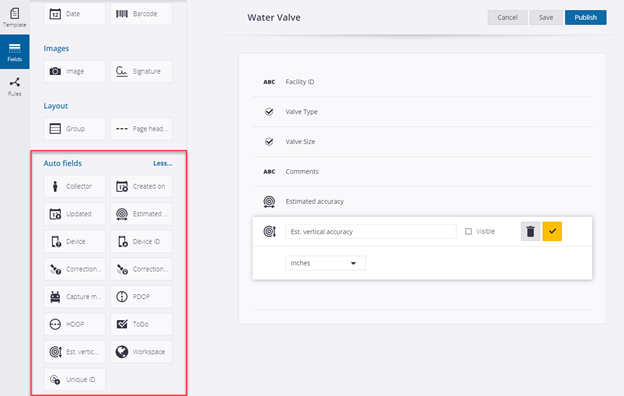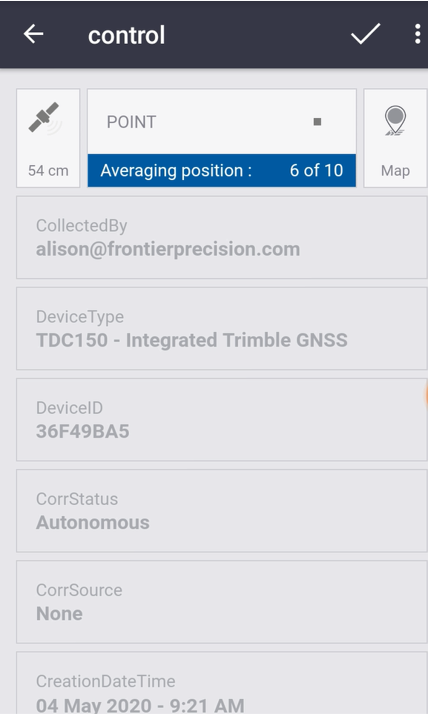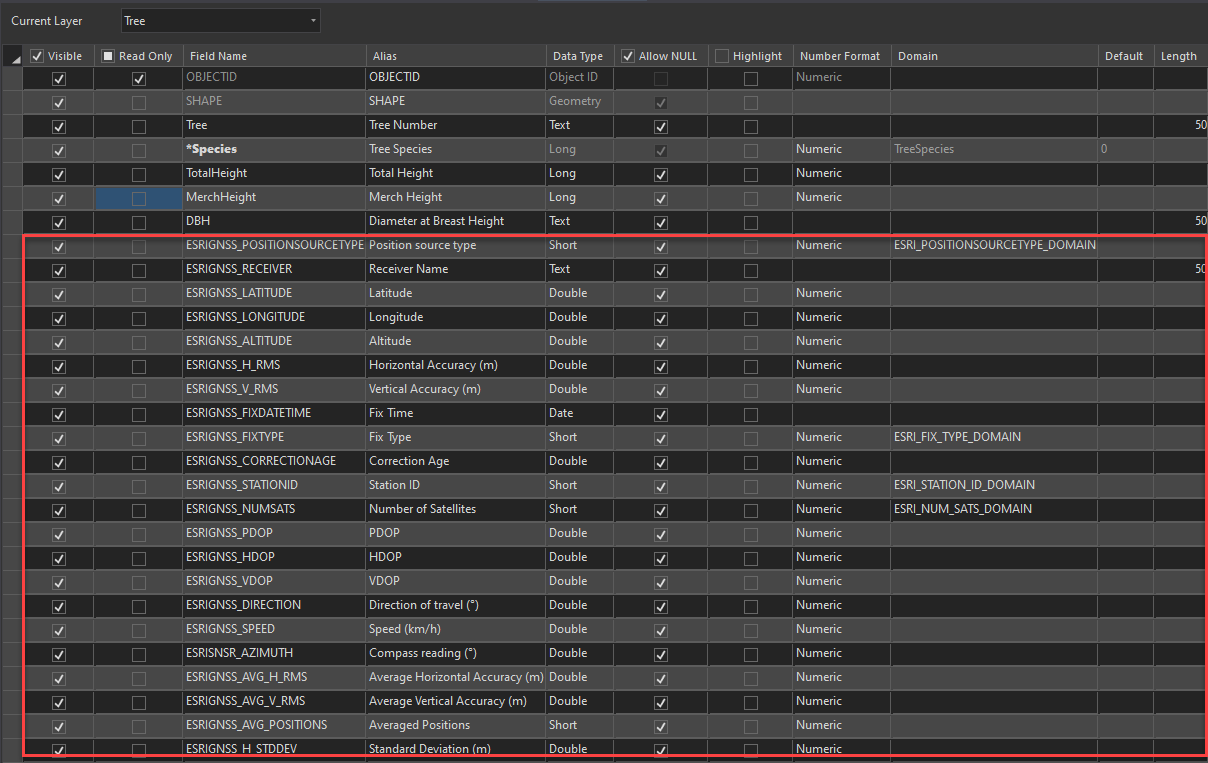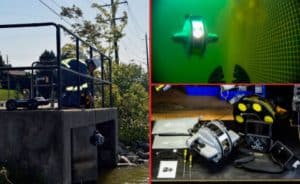The Power of GNSS Metadata
Proving that GNSS data has been collected with high accuracy is just as important as selecting the proper equipment and exercising best data collection processes. GNSS metadata can be a simple way to capture the needed information to prove your data is indeed high accuracy. GNSS metadata is information about the location, accuracy, device, receiver, satellite connection, or real-time correction that can be captured automatically into attribute fields with no needed input from the field technician. Pairing metadata information along with the geometry and feature attributes assures the integrity of the data.
GNSS metadata fields for any software will need to be created prior to data collection. The information is captured into the attribute fields during the data collection process. With current data collection apps and real-time workflows, there is no way to extract GNSS metadata after the data has already been captured. The metadata fields can vary slightly depending on the data collection software being used. The below sections will discuss how to add GNSS metadata fields for use in our most popular data collection apps.
The internal receiver on a consumer device may not provide the metadata information to populate the attribute fields. A high-accuracy GNSS receiver such as the Trimble R series or Juniper Geode can populate all metadata fields.
Collector for ArcGIS or ArcGIS Fields Maps
Collector or Fields Maps will only capture GNSS metadata for point feature layers. The fields that will be populated depend on the geometry capture method of single vs. averaged capture as shown below.
The easiest way to add the GNSS metadata fields to your point feature class is to use the Add GPS Metadata Fields tool. This tool will be available in the geoprocessing toolbox in ArcGIS Pro. For ArcMap users, the same tool can be downloaded from GitHub here and manually added into the ArcMap toolbox. These tools can be run on point feature classes before the data is published to ArcGIS Online or Portal. ArcGIS Pro’s integration with ArcGIS Online and Portal will allow the GNSS metadata tool to be used on existing hosted point feature layers.
- Open the Add GPS Metadata Field tool from the toolbox.
- Browse to the point feature class or feature service you want to add the metadata field to.
- Run the tool.
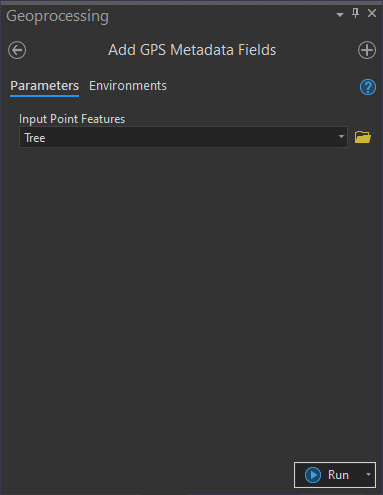
- Right click on the feature class or feature service and choose Design> Fields.
- The new fields will be visible.
- You can use the pop-up configuration in the web map to configure visibility of the metadata fields for Collector or the Field Maps form builder for Field Maps.
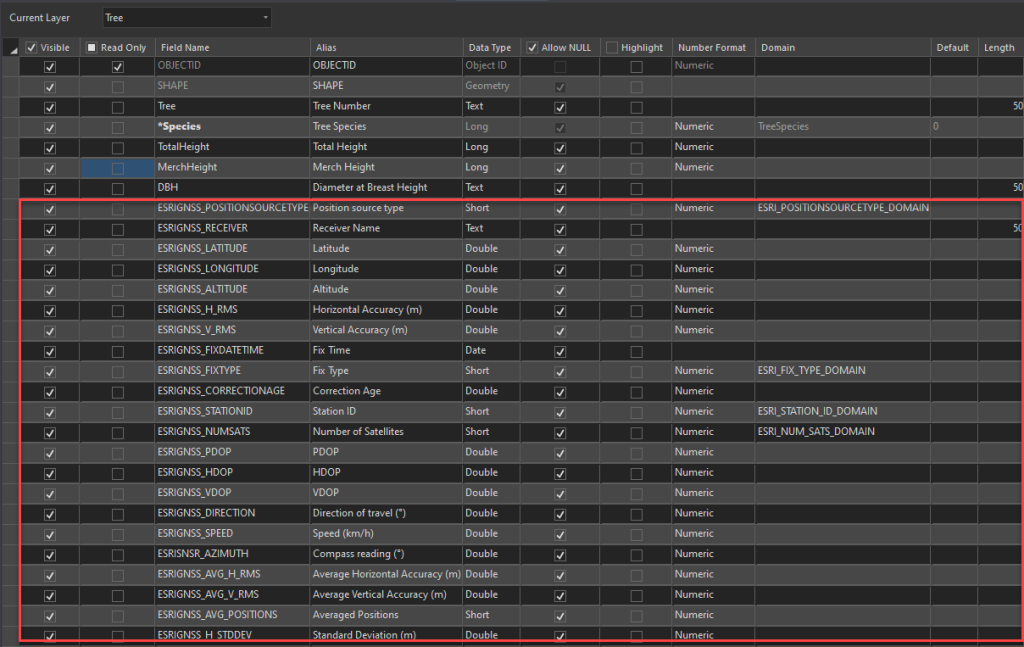
More information can be viewed in the Collector Help and Field Maps Help.
Survey123 Connect
Survey123 Connect will use the pulldata function in the calculation field to extract the GNSS metadata information from the geopoint field type. Metadata extraction will not be available if you are building surveys in the Survey123 Web Designer.
Let’s take a deeper look into the pulldata formula for extracting Latitude.
- The formula command will be pulldata()
- The “@geopoint” parameter in the formula extract information from the geopoint field type in the survey form.
- The ${location} parameter is pulling the name of geopoint field type that hold the actual geopoint value.
- The “y” parameter is defining the geopoint parameter that you will be extracting.
- GNSS metadata field can be turned to read only to prevent users from editing the values.
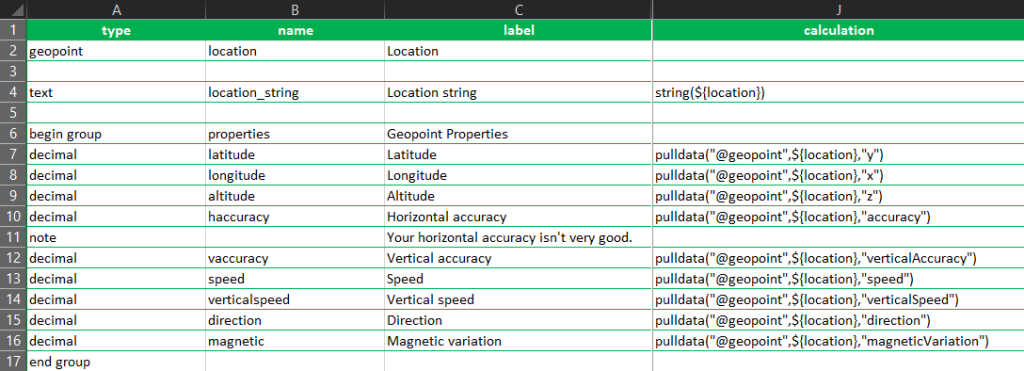
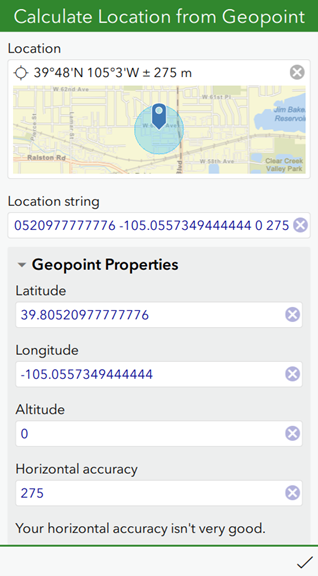
An example of the GNSS metadata calculations can be found in Calculate Location from Geopoint in the sample section of Survey123 Connect. To view all values that can be extracted with the pulldata function, please view the Survey123 Help.
Trimble TerraFlex
TerraFlex workflows will refer to GNSS metadata field as an autofields. For those uses that use Trimble Positions or TerraFlex ArcMap add-ins, the auto field will be enabled during the Layer Settings page of the Positions Project configuration.
- Open the Positions Desktop Administration.
- Create a new or edit a Positions Project.
- Go to the Layer Settings tab.
- Select the layer from the workspace and the Auto Collection Fields will become interactive.
- To automatically add all auto fields, click on the add all (common) hyperlink. Alternatively, you can manually route the autofield by clicking the drop down for the desired autofield and routing to an existing field or have it create the new field.
- Finish the project configuration to save.
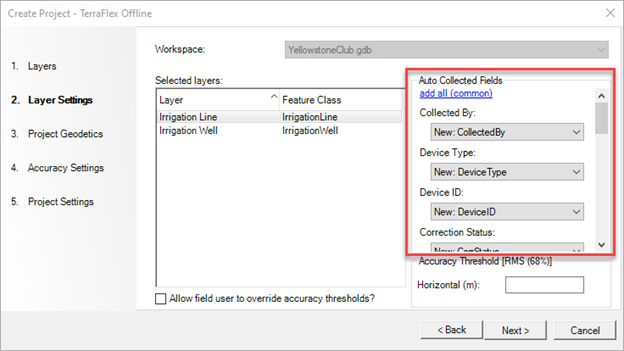
For TerraFlex on Connect workflows, you will add the auto fields to your template.
- Start a new template or edit an existing template.
- Click on the field tab.
- Drag and drop autofields onto your template.
- The autofields will be non visible on the form by default. Check the Visible setting on the autofield to make the field visible during data capture.
- Configure any measurement option per autofield type.
- Publish or republish the template to push the changes to the TerraFlex app.
